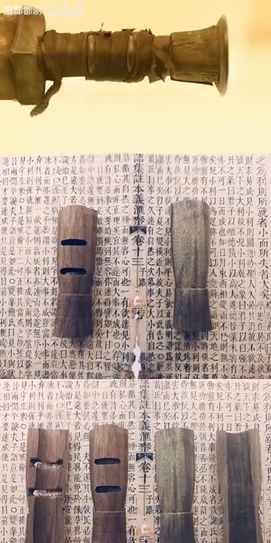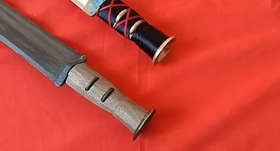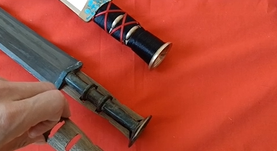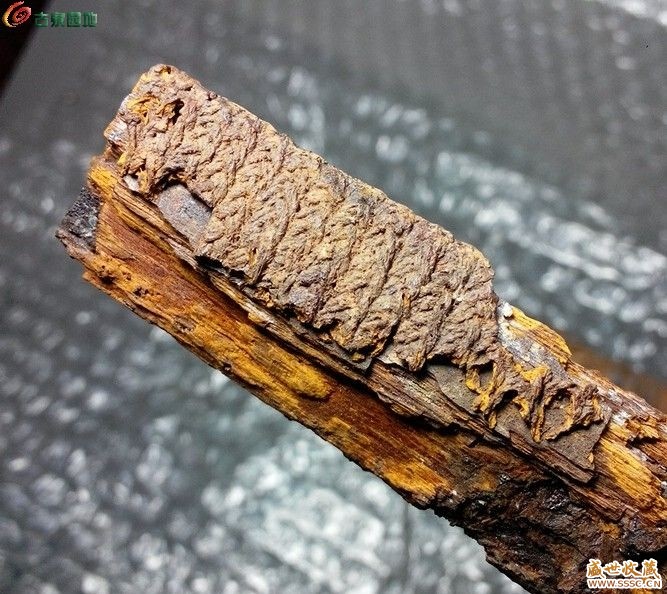|
|
Post by larason2 on Apr 8, 2023 3:08:47 GMT
If we want to create a Bronze age replica sword, there are a few options for handles. Leather, bone, horn, etc. But when a handle was left as wood, how was it finished? Of course, not finishing was an option, basically the oils on your hands. But they would have had oils for an oil finish, they would have had hide glue (but that's sticky until it cures), and they could have painted the wood, say red. Supposedly in Greece they also had access to some lacquers, but I don't know when that would have started. There is some Bronze age wood that has survived, presumably also tool wood. So does anyone know how it was finished?
|
|
|
|
Post by treeslicer on Apr 8, 2023 4:09:23 GMT
If we want to create a Bronze age replica sword, there are a few options for handles. Leather, bone, horn, etc. But when a handle was left as wood, how was it finished? Of course, not finishing was an option, basically the oils on your hands. But they would have had oils for an oil finish, they would have had hide glue (but that's sticky until it cures), and they could have painted the wood, say red. Supposedly in Greece they also had access to some lacquers, but I don't know when that would have started. There is some Bronze age wood that has survived, presumably also tool wood. So does anyone know how it was finished? Be aware: Genuine hot hide glue, used properly, hardens and dries very quickly. If you want to learn all there is to know about hot hide glue, go search on a luthier's forum (they'll have a lot on varnish, too, see below). It's actually easy to use, once you know how.
If you think hide glue is gooey, you may have been using Titebond "liquid hide glue", maybe on leatherwork. If you have, please stop. and just say no. It's not the real thing, often won't dry out (because it has additives with a limited shelf life), and isn't good for anything useful, really. The stuff has poor adhesion at best, and humidity destroys it.
The short answer to your question is, nobody knows. The few grips that have survived are solid metal or fancy jewelry. However, if you are making replicas, consider the following:
What finished wood has survived from the Bronze Age is mostly from Egypt. They used resin based varnishes just as we do today, though what they made them from isn't fully known. Cedar oil (known to be used in embalming in Egypt, and used in paint by the Sumerians) and linseed oil (the Egyptians raised flax and wove linen, you can bet they pressed the seeds for oil) would have been available, and these together will make a decent oil varnish. Once it crosslink cures with the effects of oxygen and sunlight, it's quite permanent. Adding resins will improve its hardness. Note well, I'm not getting into any discussions of "cooking varnish" over heat (necessary with raw linseed oil). Go elsewhere for that, it's an art, and dangerous if you don't know how. Hell, it's dangerous if you do know how. 
The use of mineral and lake pigmented paints also goes back to the Egyptians and Sumerians, but their complete formulae aren't fully known either.
Y'know, if you mix pigments into a varnish, don't you get paint? Sounds like a simple answer to me.  |
|
|
|
Post by larason2 on Apr 8, 2023 15:57:33 GMT
Thanks, you raise a good point. The hide glue I get is this one: www.leevalley.com/en-ca/shop/tools/supplies/adhesives/glue/113546-antique-restorers-pearl-veneer-hide-glue?item=56K5005It does cure hard, but it can take a while, and in the meanwhile it is sticky. If it keeps getting wet, then it never dries hard! That makes me think if your hands sweat, then the wood surface would keep getting sticky. They also have a granular grade that is supposed to dry faster, but I've gotten used to this one. I wouldn't try the titebond stuff, can't stand anything else added to it! Oil finishes are pretty easy, I've used them on a few things already. I've never tried to heat an oil finish though, that does sound hazardous! The resin idea is a good one though. I know Myrrh and Frankincense were probably traded widely in the bronze age (they were very valuable though!). It's worth getting a bit of Myrrh and trying it out as a finish. I understand it is soluble in alcohol just as shellac is, and I might try to add a small amount of oil in to soften it up. Thanks for the tips! |
|
|
|
Post by treeslicer on Apr 8, 2023 20:53:03 GMT
Thanks, you raise a good point. The hide glue I get is this one: www.leevalley.com/en-ca/shop/tools/supplies/adhesives/glue/113546-antique-restorers-pearl-veneer-hide-glue?item=56K5005It does cure hard, but it can take a while, and in the meanwhile it is sticky. If it keeps getting wet, then it never dries hard! That makes me think if your hands sweat, then the wood surface would keep getting sticky. They also have a granular grade that is supposed to dry faster, but I've gotten used to this one. I wouldn't try the titebond stuff, can't stand anything else added to it! Oil finishes are pretty easy, I've used them on a few things already. I've never tried to heat an oil finish though, that does sound hazardous! The resin idea is a good one though. I know Myrrh and Frankincense were probably traded widely in the bronze age (they were very valuable though!). It's worth getting a bit of Myrrh and trying it out as a finish. I understand it is soluble in alcohol just as shellac is, and I might try to add a small amount of oil in to soften it up. Thanks for the tips! If you're shopping at Lee Valley, you must already know something about this stuff.
That's real hide glue, but not what I use for woodwork. Lower Bloom weights extend gel time at a cost to ultimate bond strength and humidity resistance (there's your problem). I use 192, 251, and 315 gram-strength glues for different types of joints and seams, depending on how likely they are to be pulled apart in use, or weakened by humidity. That said, I don't recommend using hide glue as a surface finish. It doesn't "cure", luthiers still use it because it's reversible with warm water for repairs.
The resins that I use most are colophony (pine rosin), sandarac, mastic, and dammar, usually mixed. Making a common linseed oil and turpentine (use ONLY real gum turpentine, not whatever fake petroleum-diluted crap many hardware stores carry), with the powdered gums added dissolved in ethanol, should work fine as a finish. Or just get a can of a good traditional spar varnish, and tell people you got it from traders from the East. 
An easy way to get colors without tedious grinding (even pre-powdered pigments need size equalization and clump removal), is to get a set of artist's oil paints, compound the color you want, and mix small amounts into the varnish.
|
|
|
|
Post by eastman on Apr 9, 2023 19:40:09 GMT
|
|
|
|
Post by larason2 on Apr 9, 2023 20:53:41 GMT
Haha! Eastman: not at all. These grips are for lesser sword persons like myself. If you desire to grip a sharp blade, who am I to doubt your mastery of the art?
|
|
|
|
Post by Foolonthehill16807 on Apr 12, 2023 0:38:38 GMT
Treeslicer, you mean you ~don't~ relish the adventure and excitement everytime someone tries cooking Fulton's Terpene varnish for the the first time?
|
|
|
|
Post by treeslicer on Apr 12, 2023 1:08:45 GMT
Treeslicer, you mean you ~don't~ relish the adventure and excitement everytime someone tries cooking Fulton's Terpene varnish for the the first time? Exactly, but thank you for asking.  
For those who may be curious about what we are laughing about, the thoroughly obnoxious process may be found here:
It will give you some idea of why varnish cooking is best left to the experts. PLEASE don't try this at home. In some places, doing this at home, or without some sort of a permit, or both, is likely illegal. It won't thrill your neighbors, either, or the homeowners association, and might get you raided as a drug lab.  |
|
Ouroboros
Member
Imperial, Mysterious In Amorous Array
Posts: 581 
|
Post by Ouroboros on Apr 12, 2023 1:26:28 GMT
Treeslicer, you mean you ~don't~ relish the adventure and excitement everytime someone tries cooking Fulton's Terpene varnish for the the first time? Exactly, but thank you for asking.   For those who may be curious about what we are laughing about, the thoroughly obnoxious process may be found here:
It will give you some idea of why varnish cooking is best left to the experts. PLEASE don't try this at home. In some places, doing this at home, or without some sort of a permit, or both, is likely illegal. It won't thrill your neighbors, either, or the homeowners association, and might get you raided as a drug lab.  Not to us fully legalized Canadians ... In all seriousness there are some vile recipes out there for rending down amber to varnish that I will never attempt (again). I would think the use of various pitch and tar blends (birch tar for instance sets quite hard given certain additives or sticky even gummy) could have been used at various consistencies with oil or alcohol. I have used it for fletching arrows as well as helping attach arrowheads and stone axeheads to hafts. Diluted, mixed with beeswax and applied to wood and metal keeps rust away and grain supple....Making it is a bit of a process but well within the capabilities of neolithic hands. Residues of the productoon of such are rich in some north american native peoples pottery exhibits. |
|
|
|
Post by treeslicer on Apr 12, 2023 1:41:47 GMT
Exactly, but thank you for asking.   For those who may be curious about what we are laughing about, the thoroughly obnoxious process may be found here:
It will give you some idea of why varnish cooking is best left to the experts. PLEASE don't try this at home. In some places, doing this at home, or without some sort of a permit, or both, is likely illegal. It won't thrill your neighbors, either, or the homeowners association, and might get you raided as a drug lab.  Not to us fully legalized Canadians ... In all seriousness there are some vile recipes out there for rending down amber to varnish that I will never attempt (again). I would think the use of various pitch and tar blends (birch tar for instance sets quite hard given certain additives) and I have used it for fletching arrows as well as helping attach arrowheads and stone axeheads ton hafts. Making it is a bit of a process but well within the capabilities of neolithic hands. Residues of the productoon of such are rich in any north american native peoples pottery exhibits. At the risk of a terrible pun, it's not any accident that those pots are all broken...... 
For casual varnish experiments, I recommend dissolving a cake of violin rosin (pre-cooked colophony) in 91% isopropyl alcohol, to -make a spirit varnish, to begin with, then move on to other formulations that also don't require any cooking.
|
|
Ouroboros
Member
Imperial, Mysterious In Amorous Array
Posts: 581 
|
Post by Ouroboros on Apr 12, 2023 1:51:30 GMT
I had just tossed in an edit there to include the beeswax, tar and oil finish ive used  |
|
|
|
Post by zi on Dec 20, 2023 6:47:56 GMT
|
|
|
|
Post by larason2 on Dec 20, 2023 20:16:01 GMT
Thanks!
|
|














